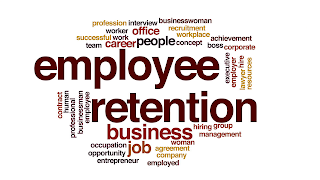Impact of Rewards on Employee Engagement
Impact
of Rewards on Employee Engagement
Employee Engagement
Simply, the employee engagement can be described as a high level of employee involvement, commitment to the organization and job satisfaction. Since employee engagement is a key to the success of an organization, most employers exercise different tactics in motivation of the employees to boost their engagement at work.
Happy employees are
much more likely to be productive members of the team who will look forward to
stepping through the doors of an organization each morning. Implementing
employee benefits is a one of the excellent way of improving engagement, as
they are crucial to ensuring your employees are happy and focused in their
work.
How else do benefits fit into employee engagement?
How else do benefits fit into employee engagement?
· Benefits put people at the heart of what you
do.
By implementing employee benefits, you’re putting people at the heart of your company. This shows your employees that, as an employer, you care about them and value their achievements and progression. After all, your company would be nowhere without its people.
Employees will understand that
their employers are empathetic and are here for them through benefits such as
an Employee Assistance Programmes. Employees will feel motivated to do their
best as they will be satisfied and comfortable in their role. As well as this,
employees are more likely to support company goals, as they will feel a sense
of belonging to their workplace’s team. This because valuing your employees
through benefits will ensure employees feel connected and an important part of
the organization they work for.
· Benefits look after your employees’
Employee wellbeing is an integral
part to their engagement in the workplace, as benefits such as Health Cash
Plans and Hospital Treatment Insurance can help to alleviate stress and
financial burden caused by ill health. This will ensure employees are less
distracted and less likely to spend extended amounts of time off work.
Cycle to Work Schemes are another
great way to look after your employees’ wellbeing, through enabling them to
enjoy more physical exercise at a reduced cost all whilst saving on National
Insurance. Regular exercise can supercharge productivity for those who may be
less active, and through implementing these benefits, employees can come to
work feeling refreshed, engaged, and ready to tackle the day ahead.
· Benefits are an important investment.
It will come as no surprise that
disengaged employees will be more likely to be absent from work. By investing
in employee benefits, employers can boost employee engagement and in turn
reduce the amount of lost time incurred by extended absence and sickness.
As well as reducing the cost of
absence in the workplace, employee benefits are a great investment that can
improve staff retention. This is far more cost-effective than increasing budget
for recruitment, as benefits will help you ensure the best talent stays on your
side. Employees who feel valued and important will be far less likely to go
elsewhere, because who would want to leave such a caring workforce?
· Improving lives.
Employee benefits tie into
employee engagement by looking out for your people, ensuring their growth and
encouraging progression within your company. By improving employee engagement,
you improve lives, and encourage positive experiences within the workplace that
reflect back to you as the employer, generating the perfect environment for
success.
Many research articles have shown that employers who cares the employees with good recognition and career development programs scored significantly higher in terms of productivity, revenue, customer retention, and employee retention than those that didn’t. What all this shows is that if you carefully define who you are and what you want, if you select your people to be aligned with your core values, if you listen carefully to what they want from their jobs, if you provide them with the guidance they want, and if you give them the recognition and rewards they deserve, you can greatly reduce turnover, enhance engagement, and improve productivity and profits.
References
* Scott, D., McMullen, T., Royal, M., Stark, M., (2010). The Impact of Rewards Programs on Employee Engagement. Available at: https://www.worldatwork.org/docs/research-and-surveys/survey-brief-the-impact-of-rewards-programs-on-employee-engagement.pdf.





Rangana, I agree that you are trying to prove a point with regard to employee benefits but in my view point, actual challenge faced by organizations is to set up an effective employee benefit package that suits everyone and motivate everyone equally since each individual employee has different set of needs and wants compared to one another when it comes to employee benefits.
ReplyDeleteDear Gayan,
DeleteI also agree with you. Its a real challenge for an organization to set up an most effective benefit package to fulfill expectations of each and every employee since these expectations are vary from one to another. However most of the organizations try to introduce different benefits to match each levels of employee positions. Eventually, implementing benefits and ensuring the employees happiness will increase their engagement to the work which benefits in return to the organization.
This comment has been removed by the author.
ReplyDelete